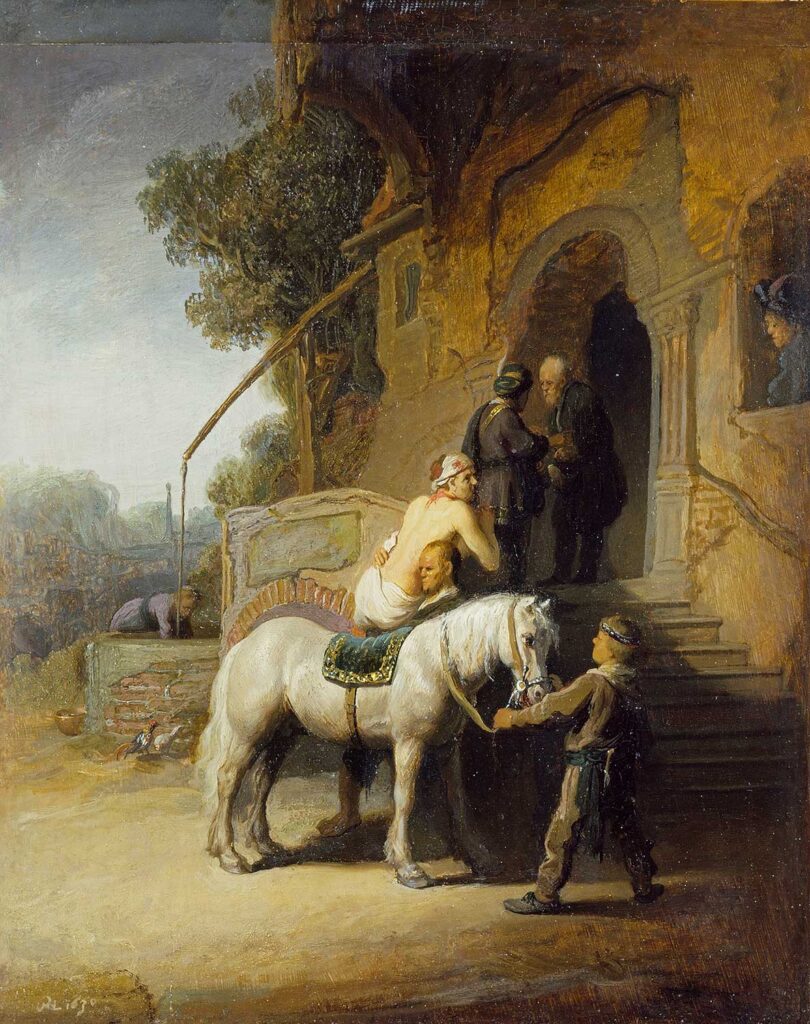The Good Samaritan by Rembrandt van Rijn was created in 1630. The painting is in The Wallace Collection. The size of the work is 24,2 x 19,8 cm and is made of oil on oak panel.
The subject represents the parable of the Good Samaritan (Luke X, 30-5) which tells of how a robbed and wounded man was left to suffer by the wayside until a Samaritan, an enemy of his people, took pity on his plight and brought him to the safety of an inn. The painting is signed on the stone in the bottom left-hand corner with Rembrandt’s monogram ‘RHL’, which he employed during his early career in Leiden between1624–32, and is dated 1630. The date of execution accords well with the style of the picture, which displays the bright palette and smooth manner of Rembrandt’s Leiden period. Read more in The Wallace Collection.
About the Artist: Dutch Golden Age painter, printmaker and draughtsman Rembrandt was born on 15 July 1606 in Leiden, in the Dutch Republic, now the Netherlands. As a boy, he attended a Latin school. At the age of 13, he was enrolled at the University of Leiden, although according to a contemporary he had a greater inclination towards painting. In 1624 or 1625, Rembrandt opened a studio in Leiden, which he shared with friend and colleague Jan Lievens. In 1627, Rembrandt began to accept students, which included Gerrit Dou in 1628 and Isaac de Jouderville… Read more
Order a reproduction of this work (printed on canvas)

